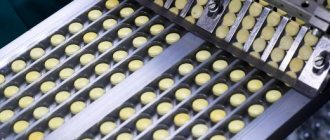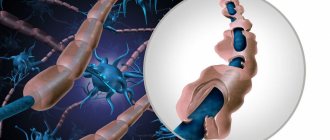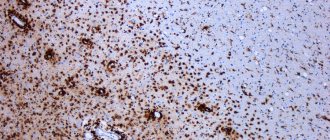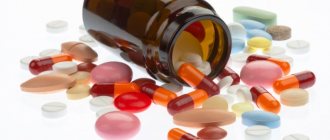A cure for multiple sclerosis has been developed in Russia
Russian scientists have developed the first domestic drug for patients with multiple sclerosis. The drug, called Xemus, is in final-stage clinical trials and could hit the market within three years. This medicine will be included in the compulsory medical insurance system and will be available to patients free of charge. According to the Ministry of Health, the number of identified patients with multiple sclerosis is constantly growing. So, from 2014 to 2015 there were 5 thousand more people.
Deputy Director of the Institute of Bioorganic Chemistry (IBCh RAS), Academician Alexander Gabibov, told Izvestia that we are talking about creating effective supportive therapy that allows a patient with multiple sclerosis to be socially active.
— Autoimmune diseases are akin to a state of oncological transformation; it is extremely difficult to cure them, and in some cases it is almost impossible. Among them, a special place is occupied by such a neurodegenerative inflammatory disease as multiple sclerosis. As the disease progresses, the patient develops autoantibodies against their own proteins, says Alexander Gabibov. He noted that the IBCh RAS xemus is being developed jointly with St. Petersburg.
According to Alexander Gabibov, there are currently few drugs for the treatment of multiple sclerosis; patients are mainly prescribed foreign drugs, for example, Copaxone. This remedy was invented by Israeli professor Michael Sela. He proposed a drug based on an irregular polymer of amino acids. Several generics are also used in Russia and around the world.
“We proposed a more specific therapy: we proposed loading peptide fragments of myelin basic protein into liposomes. Clinical trials show that it works, explains Alexander Gabibov. Now, according to him, the first stage of clinical trials has been completed. This work is being carried out jointly with the Institute of Neurology of the Russian Academy of Sciences, the Center for the Treatment of Multiple Sclerosis in St. Petersburg (City Clinical Hospital No. 31) and other medical institutions.
“These are exclusively Russian developments, they are patented,” emphasized Alexander Gabibov. According to his forecasts, the drug will appear on the market no earlier than 2021.
— Treatment with Copaxone currently used costs thousands of dollars. I think that our drug will be much cheaper,” noted Alexander Gabibov. According to him, xemus will be included in the compulsory medical insurance system and will be available to patients with multiple sclerosis free of charge.
According to the Ministry of Health, in 2014, 67,637 people with multiple sclerosis were registered in Russia. And in 2015, the number of patients registered increased to 72,767 people. The detection rate of multiple sclerosis continued to increase in 2021.
As the department told Izvestia, work on new drugs for multiple sclerosis is carried out regularly. Help for patients is provided by specialists from the Federal Research Center for Multiple Sclerosis, who participate in clinical trials of new drugs and medical equipment.
The head of the laboratory of neuroimmunology, head of the Center for Multiple Sclerosis at the Institute of Chronology and Radiology, Professor Igor Stolyarov told Izvestia that the first drugs for the disease appeared about thirty years ago, at which time the disease began to be diagnosed using MRI. The main drugs that influence the pathogenesis of the disease are produced abroad. In Russia, the development of an original drug has been underway for several years. And domestic biosimilars are already being used.
Igor Stolyarov emphasized that patients need a drug that is effective in the later stages of development of multiple sclerosis, since the effect of the drugs decreases over time.
“At first it works, and quite effectively, but after 10–15 years difficulties arise,” says Igor Stolyarov.
He noted that it takes about 12 years to create any drug, since the drug needs to be tested.
— The development of our scientists seems promising, but what will happen in the future is difficult to say. All clinical trials must be completed, all side effects must be documented, and effectiveness must be proven. But the fact that such work is being carried out gives hope,” said Igor Stolyarov.
Causes of pathology
Scientists have not identified the exact reasons for the development of autoimmune disease. According to the theory, there are:
- infectious diseases;
- dysfunction of the circulatory system, when lymphocytes destroy healthy cells of the body along with ineffective ones;
- viral diseases;
- heredity.
New methods of treating multiple sclerosis are of interest to many.
The symptoms of the disease in question are identical to the symptoms of neurological diseases. Based on this, the process of establishing a correct diagnosis in the early stages becomes difficult. The pathology is characterized by:
- Short-term impairment of visual function.
- Dizziness, fatigue.
- Unnatural movements.
- Weakness in the limbs.
- Increased sensitivity to pain.
- Numbness of the limbs.
- Speech impairment.
- Partial paralysis.
Monoclonal antibodies
These drugs are based on specific proteins. They recognize the “code” of the affected cell and give a signal to “eliminate” it. In MS, their function is to reduce the aggression of B-cell immunity. Monoclonal antibodies are used in second line DMT. Among them, alemtuzumab, natalizumab and the immunosuppressant fingolimod are registered in Russia.
| Alemtuzumab Lemtrada Antineoplastic Second-line treatment for MS | Relapsing-remitting form; Some studies have shown the drug's effectiveness; It was compared with interferons beta-1a, beta-1b. |
| Ofatumumab Arzerra Antitumor | Second-line drug for the treatment of sclerosis; The dose is set by the doctor; Adverse reactions ranging from arterial hypertension to anemia are possible. |
| Ocrelizumab Ocrevus Targets B lymphocytes | Relapsing forms of MS; 600 mg every 6 months IV; Contraindications: not used in children and the elderly, not contraindicated in renal failure |
| Rituximab Antineoplastic For the treatment of lymphoma | RRMS In resistant forms, it can be combined with other drugs, the dose is selected by the doctor; Cannot be used in children or during pregnancy; use with caution in cases of decreased renal function; Side effects: fever, chills, headaches, muscle aches. |
| Tysabri Natalizumab PITRS second line | Relapsing-remitting form of MS; Not used for leukoencephalopathy, the presence of other malignant tumors, in children and adolescents; Treatment in a hospital, the dose is selected by the doctor; Side effects: urinary tract infection, chills and fever, nausea, vomiting, headache. |
Immunosuppressors and cytostatics
For multiple sclerosis, substances that affect the immune system are used. By suppressing individual links, it is possible to control the activity of inflammation. We will talk in detail about such drugs below.
| Abagio First-line DMT Slows metabolism in B and T lymphocytes | Used for secondary relapsing and relapsing-remitting forms; Tablets of 14 mg are taken orally once a day; Nausea, diarrhea and headaches may occur during use. |
| Mitoxantrone Moderate effectiveness Antitumor drug | Used for RRMS, PPMS and SPMS. Disturbs the structure of DNA. Side effects: amenorrhea, urinary tract infections, hair loss, cardiac toxicity and the possibility of leukemia. |
| Cladribine | Relapsing-remitting multiple sclerosis. Tablet preparation. Side effects are minimal, no observation required, short course of treatment. |
| Methotrexate | Used in the treatment of exacerbations and for continuous use; A course of 7.5 mg per week of folic acid is recommended; A large number of side effects (fibrosis, cirrhosis of the liver). |
| Cyclosporine Used to prevent transplant reactions | Used for exacerbations; Dose 5 mg/kg for up to 3 months; Side effects: nausea, hypertension, tremor, headache. |
US developments
And there is another new method, we are talking about fullerene therapy. The development belongs to Israeli pharmacists. Thanks to it, substances and amino acids are activated, the restoration and activity of nerve cells is carried out.
In the USA, injections are being developed that stimulate the restoration of immunity, as a result of which the symptoms of the disease are suppressed. The drug has no side effects.
A group of scientists discovered antibodies to the envelope protein (ENV) in human DNA of the reactivated HERV-W virus, which promote the formation of the myelin sheath of nerve cells and their regeneration.
Antiviral drugs
Amiksin is the trade name of the substance tilorone. The drug was discovered at the beginning of the century. It has shown good results in interferon induction in mice. But not a single study in humans has yielded positive data.
Amixin should not be used for monotherapy of multiple sclerosis. It is worth remembering that the medicine has side effects (stomach, liver). It is forbidden to take pills during pregnancy.
Cycloferon is another “dubious” antiviral drug. Unfortunately, its mechanism of action is unclear. There are no studies showing its effectiveness even against viral infections. But it should not be used for MS, even in combination with the main therapy.
Briefly about the disease
Young people (25-50 years old) suffer from multiple sclerosis. The cause of the pathology is autoimmune inflammation. This is an abnormal reaction of the body. Defender cells attack the nervous tissue and cause its destruction. As a result, scars form on the sheath of nerves, or scientifically called sclerosis.
Lesions are scattered throughout the body. They can be localized in the brain or spinal cord. Or the peripheral link may be affected - the nerves going to the tissues and organs. As a result, the body produces a varied clinic. The patient experiences vague pain, loss of sensitivity and vision, and possible paralysis.
Immunoglobulins
Considered as second-line therapy for RRMS. Immunoglobulins work worse than the new DMTs. But the side effects of the drugs are mild. That's why they're leaders in safety.
| Octagam Immunoglobulin G for intravenous administration | The dose is selected by the doctor, intravenously. Indications: RRRS. Contraindications: individual intolerance. Side effects: fever, chills, increased blood pressure, shortness of breath, dry cough. |
| Pentaglobin Immunoglobulin G, A, M | The dose is selected by the doctor, intravenously. Indications: RRRS. Contraindications: individual intolerance. Side effects: allergies, joint and back pain. |
| Immunovenin | The dose is selected by the doctor, intravenously. Indications: RRMS. Contraindications: individual intolerance Side effects: abdominal pain, diarrhea, hot flashes, fainting |
| Phlebogamma Immunoglobulin G | The dose is selected by the doctor, intravenously. Indications: RRMS. Contraindications: individual intolerance and allergy to fructose. Side effects: collapse, shock and other effects of immunoglobulins |
| Gamunex | The dose is selected by the doctor, intravenously. Indications: RRMS. Contraindications: individual intolerance. Side effects: abdominal pain, anxiety, fainting, muscle pain. |
| Intratect Immunoglobulin G | The dose is selected by the doctor. Indications: RRRS. Contraindications: individual intolerance. Side effects: hemolytic anemia, skin rash |
The effectiveness of immunoglobulins is lower than the first line of DMTs. However, the number of side effects allows them to be used for mild MS. And it should also be remembered that the drugs are biologically active. There remains a risk of transmission of infection through drug infusion.







